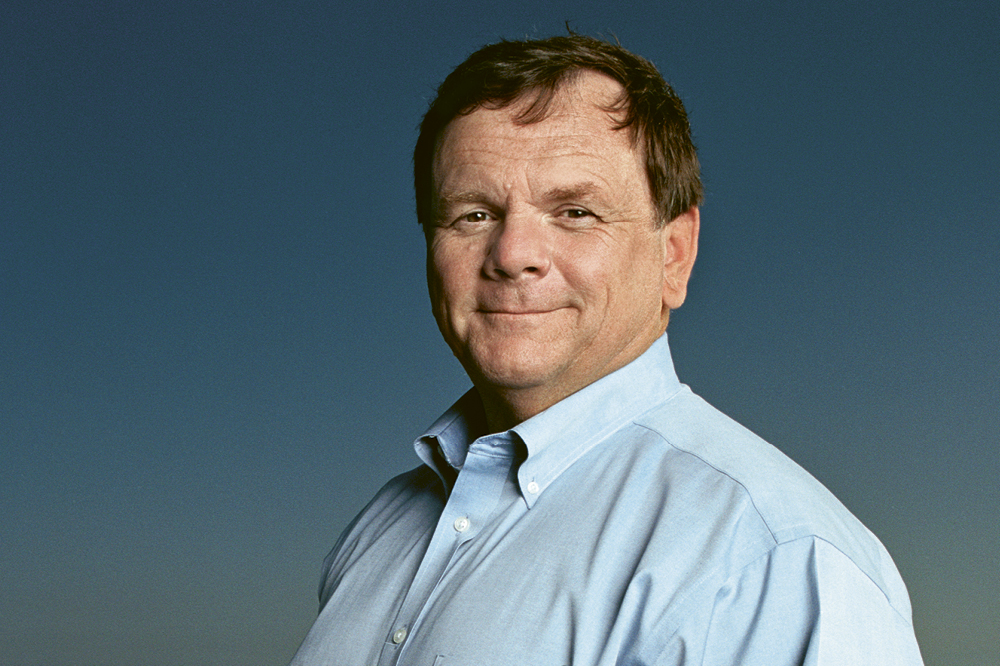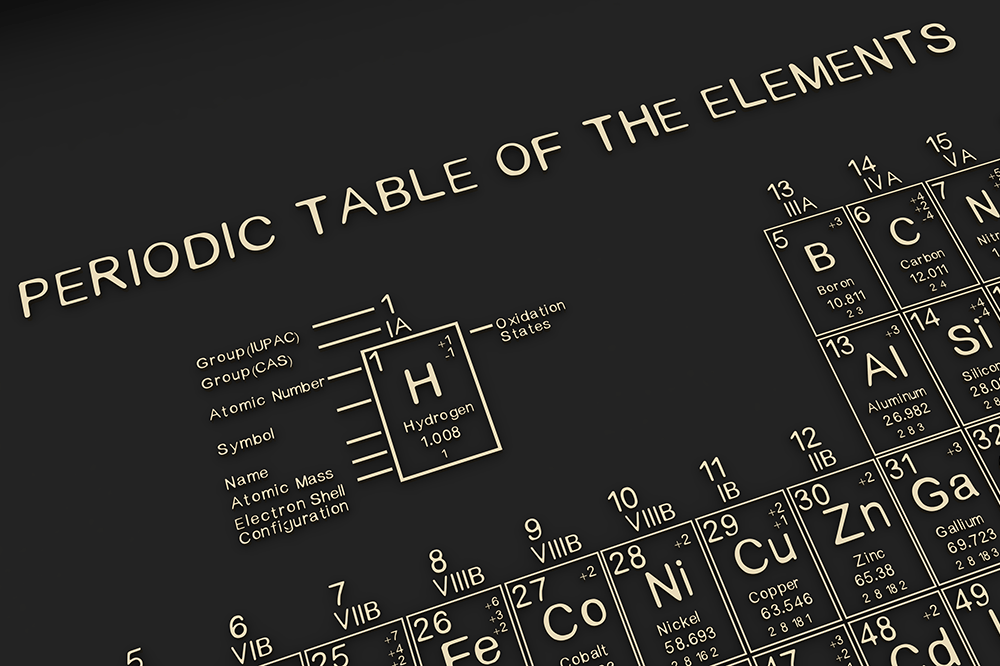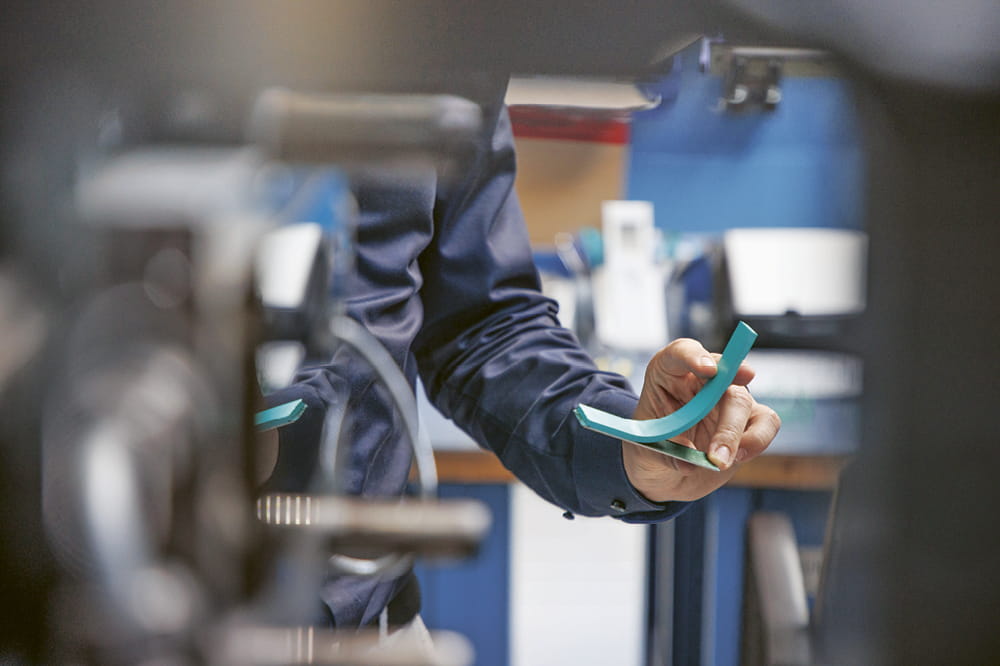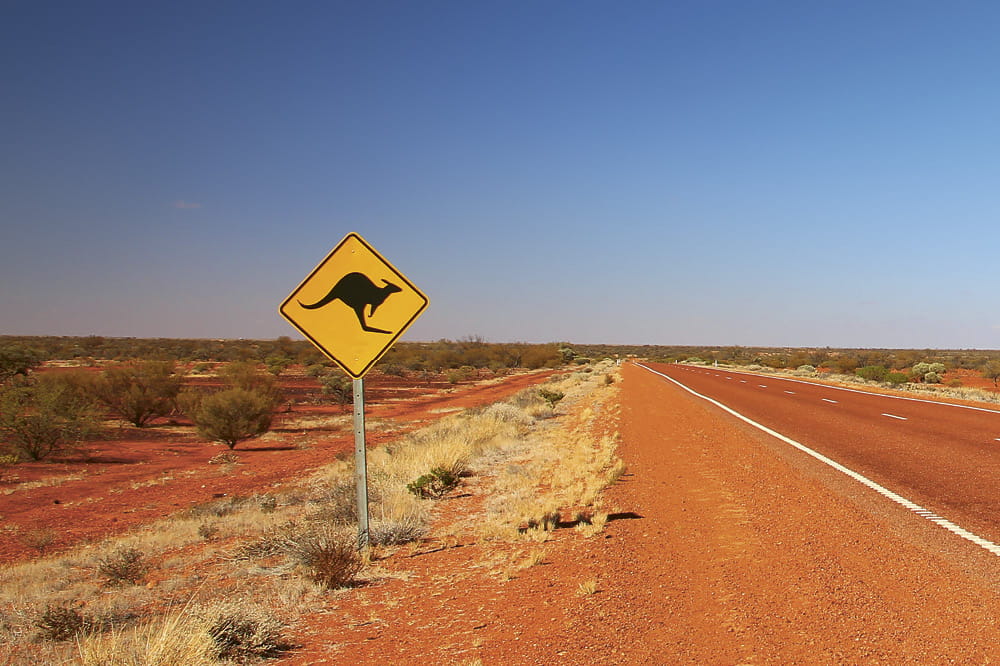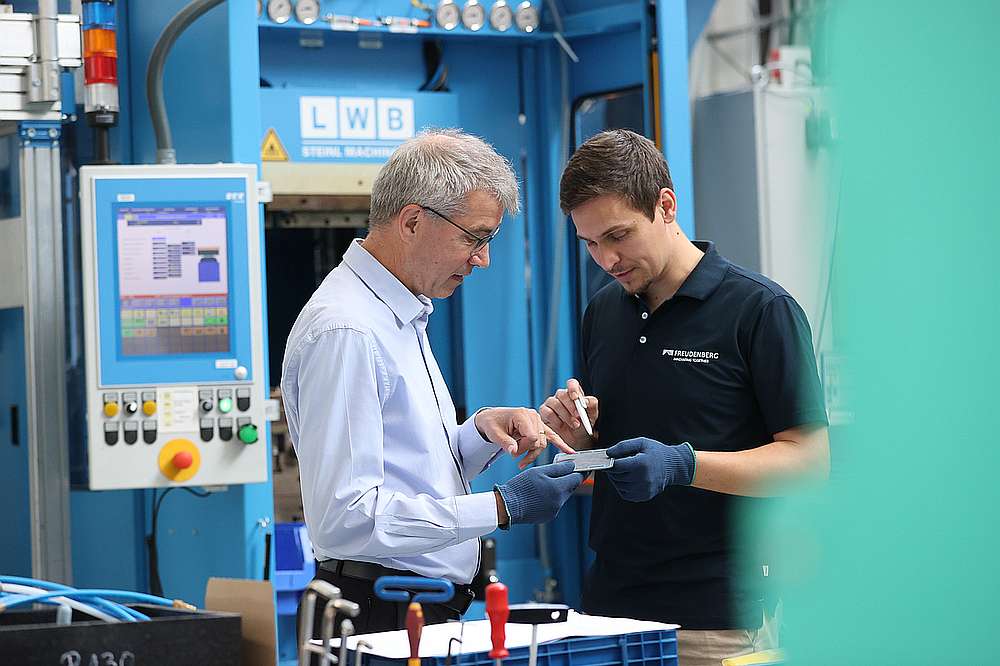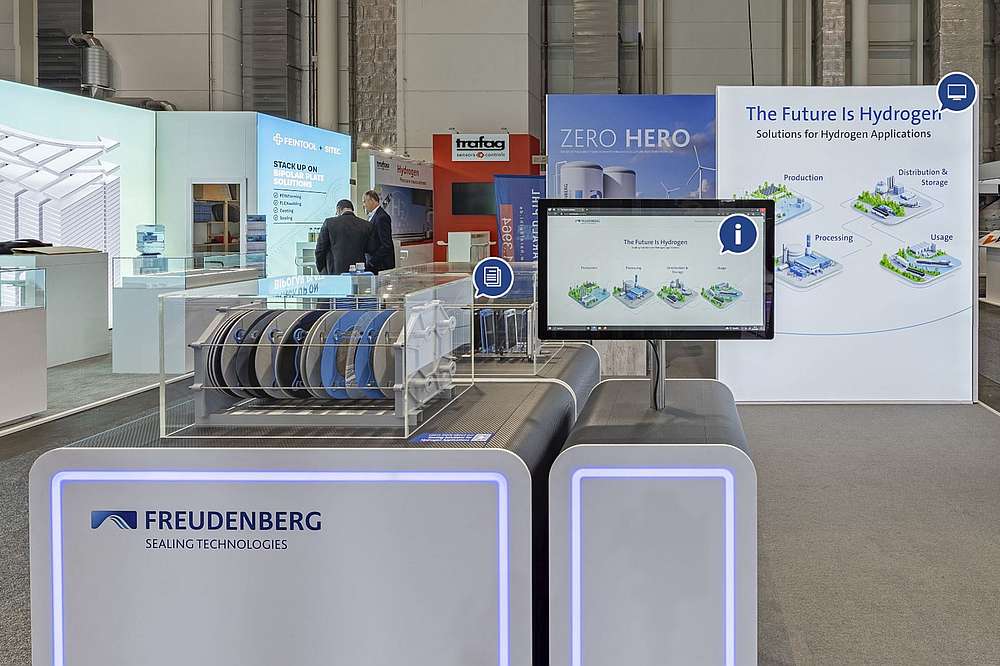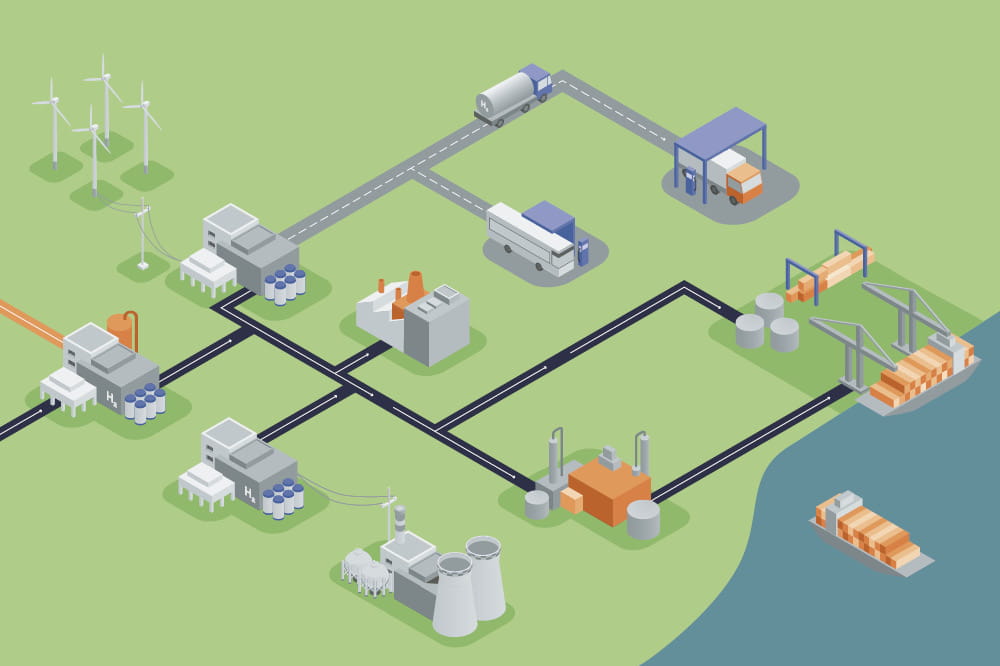Obtain news and background information about sealing technology, get in touch with innovative products – subscribe to the free e-mail newsletter.

30.08.2022 | Story
Waste Is a Mine Packed With Raw Materials
One key event in the 1970s led Terry Tamminen to devote himself to the protection of the environment and the climate. The American activist was the driving force behind Arnold Schwarzenegger's environmental agenda in California, and he was an advisor to the R20 – Regions of Climate Action initiative. Conducted in 2018, this interview is relevant in a number of ways even today, for example, when Tamminen talks about hydrogen propulsion, energy-efficient manufacturing, and the savings potential that lies dormant in landfills.
Note: This interview first appeared in Freudenberg Sealing Technologies’ ESSENTIAL Magazine in May 2018.
Mr. Tamminen, according to the Guardian, you head the list of the “Top 50 People Who Can Save the Planet.”. How does it feel to be one of earth’s saviors?
Mr. Tamminen: It was very nice to be included on this list. But the planet does not need saving. The real issue is life on earth. A full 99 percent of animals and plants were gone before the Industrial Revolution due to the normal extinction process. Yet nowadays the process is a thousand times faster than before due to mankind. If we don’t change our behavior, it won’t be long before it will be our turn.
What do we have to change?
We need to think long-term and plan ahead. As soon as our thoughts turn to protecting the environment, we mostly address the issue with short-term thinking.
You are known for planning long-term. Was there a defining moment that led to your commitment to the environment and efforts to combat climate change?
There were two defining moments. I was born in 1952 and I started scuba diving in LA when I was twelve. I was intrigued and inspired by the ocean with its animals and plants. Then we moved to Australia, and when I came back ten years later, pollution had destroyed the flora and fauna of my diving area. I was shocked. It opened my eyes to how quickly pollution could have an effect. The second key moment was when I met Arnold Schwarzenegger and got to know him as an earnest environmentalist. When he took over as governor of California, the seventh largest economy in the world, he seized the opportunity to do something to help the environment and fight climate change.
Terry Tamminen
Born in 1952, Tamminen is an American who spent part of his childhood in Australia where his family ran a breeding station for tropical fish. During his professional life, he devoted himself to the nonprofit sector, especially in environmental protection. While he was governor of California, Arnold Schwarzenegger appointed Tamminen as his environmental advisor. In 2010, he cofounded the R20 initiative, which promotes climate protection at the regional and local levels. He was also the CEO of the Leonardo DiCaprio Foundation for several years.
He appointed you as his advisor on environmental issues. What were the levers that you could apply?
Thanks to our legislation, we had the chance to act as a separate country. We passed numerous laws, first and foremost the Global Warming Solutions Act. It allowed us to set up a wide-ranging program to tackle reductions in greenhouse gases with determination. We promoted the installation of solar cells with our Million Solar Roofs Initiative. We also created a network of hydrogen filling stations to promote electric mobility. California became a pioneer in environmental protection.
You were also CEO of the Leonardo DiCaprio foundation, which is strongly committed to environmental concerns, among other issues. What sets DiCaprio and Schwarzenegger apart?
Leonardo is passionate spokesperson for efforts to protect the environment and combat climate change. He deals with these issues vigorously and travels around the world to gain first-hand impressions on site. He and Arnold know what they are talking about. Arnold used his position as governor to advance environmental issues. He first sensitized people to them and, like Leonardo, continues to do so today.
Paris Agreement: Tamminen says Americans are increasingly addressing the findings of the Paris climate conference.
With your R20 initiative, you are strengthening efforts to protect the environment on a regional basis. Do you think it is more promising to tackle environmental issues on a smaller scale than with national or international agendas?
Both approaches are important. Our policies in California were based on the Kyoto Protocol of 1997 with its legal climate protection objectives. If there had not been that international element, we couldn’t have done it that forcefully. This was the only way that we could become a driver. Many Americans have focused on the Paris Agreement in recent years, not least of all due to the range of political agendas in our country. They realized there was still much to do to protect the environment and were mobilized. Companies also see that they can profit from measures to protect the environment.
In what way?
Companies recognize that they can cut costs with more energy-efficient manufacturing. With the emissions trading, as companies move from coal and oil to renewable energy, fuel switching saves money. That’s why I really think measuring carbon emissions offers possibilities. Environmentally conscious companies benefit from the trade in emissions. With emissions trading, even if companies have not come very far, they can still do their part for environmental protection and can be motivated to invest in it.
Do people actually need to acknowledge that money can be made or saved with environmental measures, in order to play a role in this?
This may not be the only aspect. But it affects everyone. In the U.S., we could be much further along, even with the positive side effects. If we were to replace the millions of streetlights that still use old technology with energy-saving LED lamps, the investment would be amortized in just a few years. It would also be a kind of stimulus program since it would create jobs.
In your opinion, what innovations have the potential to advance efforts to fight climate change decisively?
First and foremost, hydrogen fuel cells. If the hydrogen is collected through electrolysis drawing on wind or solar energy, it is a completely emission-free resource. It can also be easily stored and is available as an energy supply when needed. Many automakers are offering fuel cell models and are thinking more in this direction. I also consider smart grids to be a major achievement. People can be at the other end of the world and still regulate the thermostat in their homes using a smartphone. This allows them to easily control energy consumption at home and save money.
China is placing a higher priority on environmental protection and efforts to deal with climate change? Do you consider China to be the world’s new hope on these issues?
China’s role as world’s great hope is not that new. But perhaps we are only recognizing a longer-term trend. China has surpassed the U.S. in wind power. China has long been the largest manufacturer of solar cells, and the United States has benefited as a buyer of its affordable products. And with its new coal-fired power plants, China is significantly cleaner and more advanced than the United States. They have been leading by example for a long time.
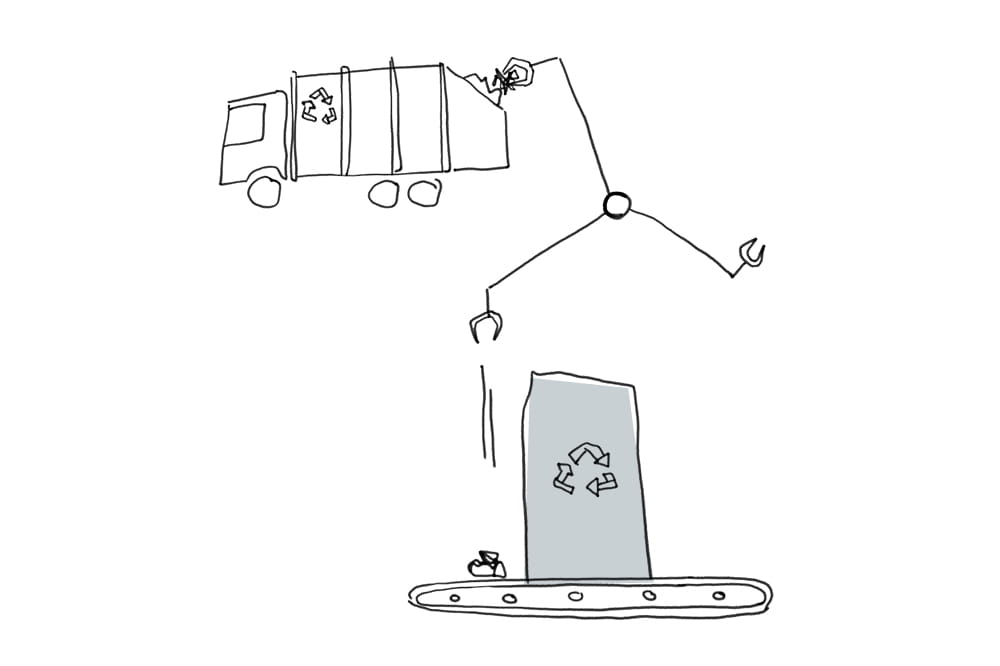

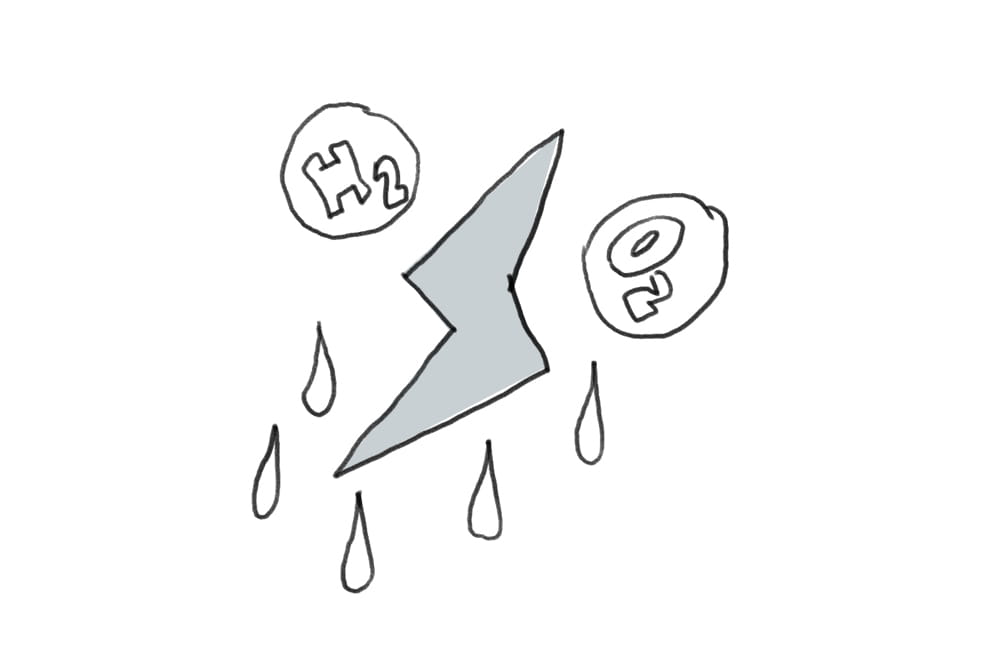
China is a forceful advocate for electric mobility. Is electric mobility one of the main ways to reduce Co2 emissions appreciably and efficiently?
Absolutely. Oil products are not merely environmental polluters. You need to drill deeper and deeper, at ever higher risk, for oil. Furthermore, oil has to travel enormous distances to reach its target markets. Electric mobility is a fantastic alternative by comparison. Gasoline just fizzles out and then it is gone. Electric motors continually score points for their innovations and improved recycling methods. Even the rare earths that they require are now used significantly less than just a few years ago.
You drive a hydrogen-fueled car. In your opinion, what advantages does a fuel cell offer compared to a battery-powered car?
I am a big fan of hydrogen propulsion. It may have a bad reputation because many people think that hydrogen is burned in the fuel cell. But that is wrong, of course. It is converted into electricity. The advantage of hydrogen vehicles is that they closely match the habits of consumers today. You fill up your car as you would with an internal combustion engine, and five to ten minutes later you are on your way again. That makes it attractive.
An experience that left a mark: As a youth, Tamminen used to scuba-dive in the Pacific. When he returned home from Australia 10 years later, he found that pollution had destroyed the flora and fauna where he used to dive.
Especially in western countries, the enormous amount of waste that human society produces is a huge problem. You envision mining raw materials from landfills. How would that work?
I am really excited about this. In a few years, we are going to mine our landfills. The way many countries have dealt with trash until now is totally incomprehensible. It offers so many opportunities at their doorstep. It’s insane that we only use objects briefly and then throw them away, only to extract the raw materials used in them at great effort from somewhere else. Recovering raw materials from landfills offers enormous potential for savings and creates jobs locally. Countries, regions and communities must understand this. Waste should not be seen as a liability but rather as a source of raw materials.
Do the increasing digitalization and automation of industry and society allay any of your concerns about climate change?
Yes. I do think they can be a solution. They make things more efficient. Package shippers in the U.S. use them to help drivers navigate and take the best possible routes. The company saves time and customers receive their goods more quickly, and it all reduces fuel consumption. Walmart is so well networked that it can avoid sending empty trucks onto the road as much as possible. And California has equipped its trash cans with sensors that tell the waste collectors which cans need to be emptied. Efficiency of this kind is not something to be dismissed.
Let’s look ahead to the year 2050: How will climate measures, population growth and economic growth interact with one another?
If our attitude continues to be “business as usual,” we are not going to be able to sustain 10 billion people until 2050. We are going to see diseases and storms made worse by climate change. In the United States, we can provide real help to casualties of severe weather, but not in Bangladesh. No one comes to their assistance. So it must be clear that we can’t waste anything. It is incredible how much food we produce and then throw away. We have to change our habits of consumption and work to reduce our waste. Farm production also needs to get more efficient, and we may have to deal with the reality that people in drought regions cannot survive any longer.
So it is time to see the current situation for what it is.
Absolutely. To me, it is important to recognize the seriousness of the situation. We’ve known about climate change for years. We barely still have time to respond effectively. People must be aware that they have to change some aspect of their attitudes. That also applies to governments and companies. Don’t look for new sources of raw materials. Comb through your landfills. Deal with your ecological footprint. Make sure that you get the CO2 out of your products. I describe how this works in my book, Cracking the Carbon Code. I think it is essential to rethink these things. The payoff will take two forms: financial and ecological.
More news on the subject Sustainability

Join Us!
Experience Freudenberg Sealing Technologies, its products and service offerings in text and videos, network with colleagues and stakeholders, and make valuable business contacts.
Connect on LinkedIn! open_in_new